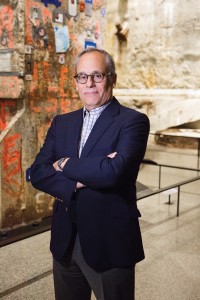9/11 TRAUMA RESPONSE RELEVANT TO OTHER GROUPS

Reading the article on Clifford Chanin ’75 (“The 9/11 Memory Keeper,” Wesleyan, Issue 3, 2015) and his discussion of the intersection of trauma response, I was struck by how closely this correlates with the experience of Americans of African descent and Native Americans. “[T]he cultural/political turmoil in societies that had difficult economies and younger populations that weren’t being well-served by educational systems …” could easily be used to describe many African-American neighborhoods and Native American reservations. The “aftermath effects on a society that had been through such trauma” also applies. And this trauma is still being lived “… part as the aftermath and part as the active threat.”
Yet this is unrecognized and unacknowledged. Systemic racism is so intricately woven into the fabric of American life that those who are unscathed by it do not even notice its existence. The lives destroyed daily by poverty, degradation, inadequate education, inexplicable violence, and often, ultimately, loss of hope, are rarely noticed. And when evidence of this destruction does bubble to the surface, there is only a brief moment of attention and contemplation that is quickly replaced by a complacent assurance that the problem is created and owned by someone else and must, therefore, be addressed by someone else.
Meanwhile millions of African Americans and Native Americans live as a forgotten people with the unacknowledged legacy of past atrocities and the unacknowledged present of devaluation and disempowerment. Even the election of the country’s first black president has served to reveal the ugly underbelly of racial hatred as a virulent backlash manifests in such ways as the June 17, 2015, massacre of black church members in Charleston, S.C., and the overwhelming support for presidential candidate Donald Trump as he promises to “make America great again.”
The brutal legacies of slavery and the forced relegation of Native Americans to reservations are also a “major part of the American historical narrative” and of the ongoing narrative. But only to those of us in the abyss.
Rebecca Bryant ’74
Winston-Salem, N.C.
